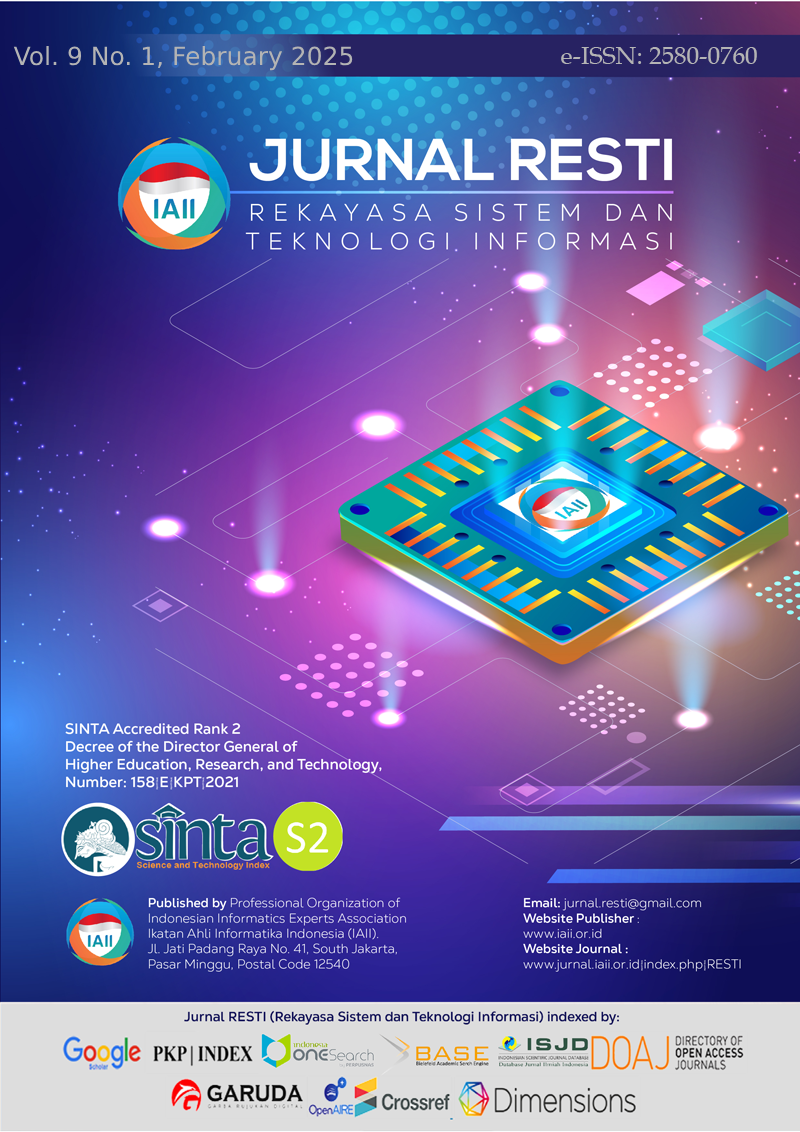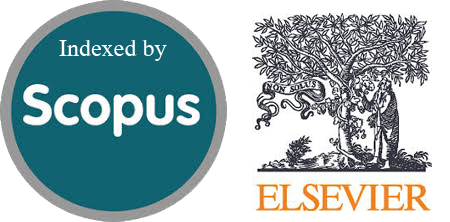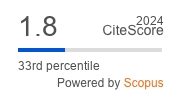Agricultural Cultivation Cost Prediction Using Neural Networks and Feature Importance Analysis
Abstract
Agriculture is one of the most important sectors integral to human civilization, and technological adaptation is necessary to maintain its quality. This research aims to achieve high productivity in the agricultural sector by using neural networks or Deep Learning methods to predict the cost of agricultural cultivation, as well as identifying significant factors that affect the profitability of potato commodities with Feature Importance analysis. The research process includes the stages of Data Preparation, Data Understanding, Split Data Training, Classification Model Building, Training, and Evaluation. Evaluation techniques such as MAE, MSE, and R² were used to assess the effectiveness of the model. The results showed that the prediction model almost achieved optimal performance, with the Cost of Cultivation C2 factor having the greatest influence in understanding the data and guiding improvements to the significant factors affecting cultivation cost prediction. The main contribution of this research is the application of optimal Deep Learning methods to predict the cost of cultivation as well as identifying the main components that impact the profitability of potato farming in India.
Downloads
References
A. Iqbaal, Pertanian Adalah Hidup Matinya Bangsa. Elementa Media, 2021.
D. W. Purba et al., Pengantar Ilmu Pertanian, vol. 1, 2020. Medan: Yayasan Kita Menulis, 2020.
K. Suratiyah, Ilmu Usahatani, Revisi., vol. 1, 2015. Yogyakarta: Penebar Swadaya, 2015.
U. Chand, M. Anoop, and A. Sharma, “Assessment of Cost of Cultivation, Resource Use Efficiency and Constraints in Cumin Production in Jodhpur District of Rajasthan,” Economic Affairs (New Delhi), vol. 68, no. 2, pp. 1129–1134, Jul. 2023, doi: 10.46852/0424-2513.2.2023.19.
R. Adhikary, “Polytunnels: The Low-cost Option of Protected Cultivation,” in Protected Cultivation and Smart Agriculture, New Delhi Publishers, 2020. doi: 10.30954/ndp-pcsa.2020.7.
S. Sahoo, C. Singha, A. Govind, and A. Moghimi, “Review of Climate-Resilient Agriculture for Ensuring Food Security: Sustainability Opportunities and Challenges of India,” Environmental and Sustainability Indicators, p. 100544, Nov. 2024, doi: 10.1016/j.indic.2024.100544.
S. Mohapatra, B. Sharp, A. K. Sahoo, and D. Sahoo, “Decomposition of climate-induced productivity growth in Indian agriculture,” Environmental Challenges, vol. 7, Apr. 2022, doi: 10.1016/j.envc.2022.100494.
A. Joshi, D. Guevara, and M. Earles, “Standardizing and Centralizing Datasets to Enable Efficient Training of Agricultural Deep Learning Models,” Aug. 2022, [Online]. Available: http://arxiv.org/abs/2208.02707
S. K. S. Durai and M. D. Shamili, “Smart farming using Machine Learning and Deep Learning techniques,” Decision Analytics Journal, vol. 3, p. 100041, Jun. 2022, doi: 10.1016/j.dajour.2022.100041.
I. Cholissodin, Sutrisno, A. A. Soebroto, U. Hasanah, and Y. I. Febiola, AI, MACHINE LEARNING & DEEP LEARNING (Teori & Implementasi). Malang: Fakultas Ilmu Komputer, Universitas Brawijaya, 2020.
B. Raharjo, Deep Learning dengan Python. Semarang: Yayasan Prima Agus Teknik, 2022.
J. D. Kelleher, Deep Learning. Cambridge: The Massachusetts Institute of Technology, 2019.
Pushpa, S. K. Srivastava, and P. K. Agarwal, “Comparative Study on Cost of Cultivation and Economic Returns from Major Crops in Eastern Region of Uttar Pradesh,” International Journal of Agriculture, Environment and Biotechnology, vol. 10, no. 3, p. 387, 2017, doi: 10.5958/2230-732x.2017.00047.x.
L. Yang and A. Shami, “On hyperparameter optimization of machine learning algorithms: Theory and practice,” Neurocomputing, vol. 415, pp. 295–316, Nov. 2020, doi: 10.1016/j.neucom.2020.07.061.
T. O. Hodson, T. M. Over, and S. S. Foks, “Mean Squared Error, Deconstructed,” J Adv Model Earth Syst, vol. 13, no. 12, Dec. 2021, doi: 10.1029/2021MS002681.
D. Chicco Corresp, M. J. Warrens, G. Jurman, and D. Chicco, “The coefficient of determination R-squared is more informative than SMAPE, MAE, MAPE, MSE, and RMSE in regression analysis evaluation analysis evaluation 4,” 2021. doi: 10.7717/peerj-cs.623.
B. Bischl et al., “Hyperparameter optimization: Foundations, algorithms, best practices, and open challenges,” Mar. 01, 2023, John Wiley and Sons Inc. doi: 10.1002/widm.1484.
K. You, M. Long, J. Wang, and M. I. Jordan, “How Does Learning Rate Decay Help Modern Neural Networks?,” Aug. 2019, doi: 10.48550/arXiv.1908.01878.
W. Hastomo, A. S. Bayangkari Karno, N. Kalbuana, A. Meiriki, and Sutarno, “Characteristic Parameters of Epoch Deep Learning to Predict Covid-19 Data in Indonesia,” in Journal of Physics: Conference Series, IOP Publishing Ltd, Jun. 2021. doi: 10.1088/1742-6596/1933/1/012050.
I. Kandel and M. Castelli, “The effect of batch size on the generalizability of the convolutional neural networks on a histopathology dataset,” ICT Express, vol. 6, no. 4, pp. 312–315, Dec. 2020, doi: 10.1016/j.icte.2020.04.010.
G. Casalicchio, C. Molnar, and B. Bischl, “Visualizing the feature importance for black box models,” in Lecture Notes in Computer Science (including subseries Lecture Notes in Artificial Intelligence and Lecture Notes in Bioinformatics), Springer Verlag, 2019, pp. 655–670. doi: 10.1007/978-3-030-10925-7_40.
Copyright (c) 2025 Jurnal RESTI (Rekayasa Sistem dan Teknologi Informasi)

This work is licensed under a Creative Commons Attribution 4.0 International License.
Copyright in each article belongs to the author
- The author acknowledges that the RESTI Journal (System Engineering and Information Technology) is the first publisher to publish with a license Creative Commons Attribution 4.0 International License.
- Authors can enter writing separately, arrange the non-exclusive distribution of manuscripts that have been published in this journal into other versions (eg sent to the author's institutional repository, publication in a book, etc.), by acknowledging that the manuscript has been published for the first time in the RESTI (Rekayasa Sistem dan Teknologi Informasi) journal ;








